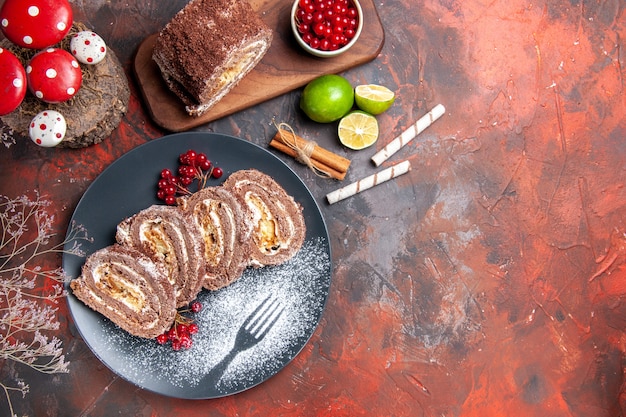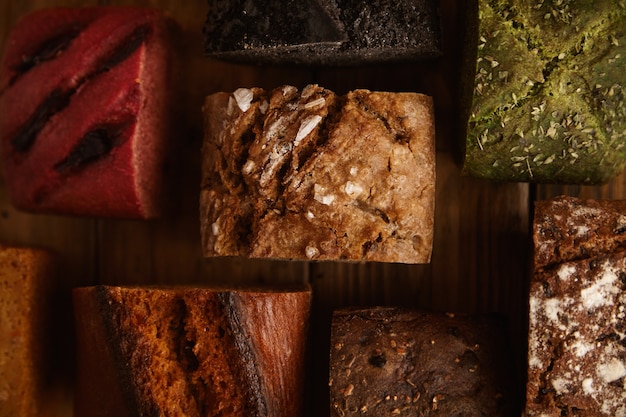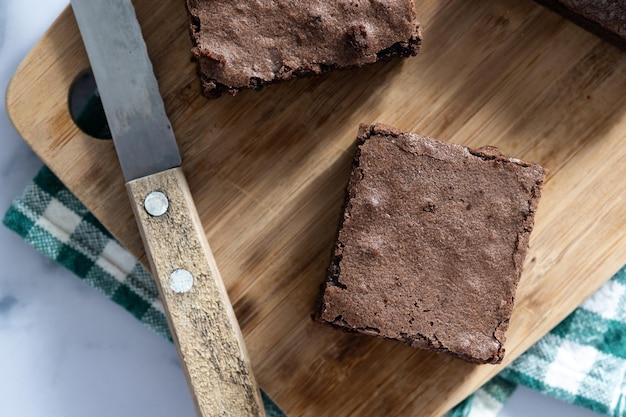Let's be honest, everyone loves a good meatloaf. It's comforting, hearty, and perfect for a weeknight meal or a family gathering. But, getting the cooking time right can be a bit tricky. You've got your 1lb of meat, your oven preheated to 350 degrees fahrenheit, and you're ready to go, but how long do you actually cook it for?
Well, the simple answer is: it depends. It's not just about the weight; it's about the shape, the ingredients, and even the pan you're using. So, let's delve into the world of meatloaf cooking times, uncover the secrets to perfect meatloaf, and ensure your next creation is a culinary triumph.
(Part 1) The Basic Rule of Thumb: A Starting Point

Okay, let's start with the basics. The general rule of thumb for a 1lb meatloaf is about 45-60 minutes in a 350-degree oven. But, remember, this is just a starting point. It's a good guideline, but it's crucial to consider a few factors that can affect the cooking time.
Shape and Size: It's Not Just About the Weight
Imagine a perfectly formed meatloaf, a beautiful, symmetrical loaf. That's the ideal scenario for that 45-60 minute rule. But, let's be real, most of us don't have perfectly shaped meatloaves, right? If yours is a bit flatter, wider, or a bit on the chunky side, it might need a bit longer in the oven. Think of it like this: the more surface area the meatloaf has, the longer it needs to cook through properly.
Ingredients: A culinary adventure
What you put in your meatloaf also plays a crucial role. If you're adding a lot of chopped veggies, like onions, peppers, or carrots, it'll need a bit more time in the oven. Why? Those veggies need time to soften up, and that takes a bit longer than just cooking the meat. Plus, veggies can absorb some of the heat, meaning the meat needs to cook a bit longer to reach that perfect, safe internal temperature.
For instance, if you're making a hearty meatloaf with a mix of ground beef, pork, and lots of chopped vegetables, you'll probably need to add about 10-15 minutes to the basic cooking time. On the other hand, a simple meatloaf with just a few basic ingredients might be ready a bit sooner.
The Pan: A Matter of Heat Distribution
The pan you choose can also impact the cooking time. A metal pan heats up quickly and cooks the meatloaf more evenly, making for a consistent cooking process. A glass pan, however, takes a bit longer to heat up, meaning your meatloaf might need an extra few minutes in the oven.
If you're using a dark, non-stick pan, it will absorb more heat, potentially shortening the cooking time slightly. On the other hand, a light-colored pan might reflect some of the heat, potentially lengthening the cooking time. It's all about finding the right balance for your specific pan and oven.
(Part 2) How to Tell If Your Meatloaf is Done: Beyond the Timer

You've got your meatloaf in the oven, the timer's ticking, but how do you know if it's actually done? Well, the golden rule is: use a meat thermometer! It's the only way to be sure.
The Meat Thermometer: Your Culinary Ally
Now, I know, using a thermometer might seem like overkill, but trust me, it's the best way to avoid a dry and disappointing meatloaf. You want your meatloaf to reach an internal temperature of 160 degrees Fahrenheit (71 degrees Celsius) for the best results. This ensures that the meat is cooked through and safe to eat.
Think of the meat thermometer as your culinary ally, a trusty tool that ensures your meatloaf is perfectly cooked and ready to devour.
Signs Your Meatloaf is Done: A Visual and Tactile Guide
If you don't have a thermometer, here are a few other clues to tell if your meatloaf is done:
- It's firm to the touch. Give it a gentle press with a spoon, and it shouldn't feel squishy.
- The juices run clear. When you pierce it with a knife, the juices should be clear, not pink.
- The top is golden brown. This doesn't guarantee it's cooked through, but it's a good sign. It indicates the meat has been browning and developing flavor.
Remember, these are just visual and tactile cues. The only way to be completely sure your meatloaf is cooked through is by using a meat thermometer.
(Part 3) What To Do If Your Meatloaf is Overcooked: Rescue Remedies

Let's be honest, sometimes, even with the best intentions, we can overcook things. It happens to the best of us. If your meatloaf is a bit dry, don't fret! There are ways to fix it.
The Fix: Bringing Back the Moisture
The key to rescuing an overcooked meatloaf is to add some moisture back in. You can do this by:
- Adding a bit of broth or sauce. A good quality gravy or even a simple tomato sauce will help to moisten it up.
- Topping it with a glaze. A sweet glaze, like a mixture of brown sugar and mustard, can help to hide dryness and add a delicious flavour.
- Serving it with a side dish that's full of moisture. Think mashed potatoes, gravy, or even a simple green salad.
Remember, the goal is to restore the moisture and create a delicious and satisfying dish. Don't be afraid to experiment and find what works best for you.
(Part 4) meatloaf variations: Beyond the Basic
Now, let's talk about meatloaf variations! Because, let's be honest, a basic meatloaf can be a bit boring after a while. There are so many ways to spice things up.
The "Gourmet" Meatloaf: A Culinary Extravaganza
If you're feeling fancy, try a "gourmet" meatloaf. This might involve using more premium cuts of meat, like sirloin or chuck roast, and adding things like dried cranberries, chopped walnuts, or even a splash of sherry. You can even incorporate flavorful herbs like rosemary, thyme, or sage for an extra touch of sophistication.
The "Kid-Friendly" Meatloaf: Appealing to Little Palates
For the little ones, you can make a "kid-friendly" meatloaf. This could mean using a simple blend of ground beef, breadcrumbs, and eggs, and adding a fun topping like a layer of ketchup or a sprinkle of cheese. You can even cut it into fun shapes with cookie cutters for a whimsical touch.
The "Vegetarian" Meatloaf: A Hearty and Flavorful Option
For the veggie lovers, there's always the "vegetarian" meatloaf. This is usually made with a base of lentils, oats, and vegetables, and it can be seasoned with all sorts of spices. You can add a bit of nutritional yeast for a cheesy flavor or experiment with different herbs and spices to create unique and exciting flavors.
Remember, the world of meatloaf is your oyster. Be creative, experiment with different ingredients, and have fun with it. You might even discover your own signature meatloaf recipe.
(Part 5) How To Keep Meatloaf Moist: From the Inside Out
You've put all that effort into making a delicious meatloaf, and now you want to keep it juicy and tender. Here are a few tips to help you achieve that perfect meatloaf texture.
1. Don't Overmix: Gentle Mixing for a Tender Texture
When you're mixing your meatloaf ingredients, resist the urge to overmix. Overmixing can make your meatloaf tough. The idea is to gently combine the ingredients until they are just incorporated. Overmixing develops the gluten in the breadcrumbs, which can make the meatloaf dry and crumbly.
2. Use Moist Ingredients: Adding Hydration From Within
Choose moist ingredients like grated vegetables, chopped onions, and even a bit of milk or broth. This will help to keep your meatloaf nice and juicy. The moisture from these ingredients will help to keep the meatloaf moist and tender throughout the cooking process.
For example, instead of using plain breadcrumbs, try soaking them in milk or broth for a few minutes before adding them to your meatloaf mixture. This will add extra moisture and help to keep the meatloaf tender.
3. Avoid Overbaking: The Importance of Timing
We already talked about how to tell when your meatloaf is done, but it's worth mentioning again. Overbaking can dry out your meatloaf, so make sure to use a meat thermometer and take it out of the oven when it reaches the desired internal temperature.
Keep in mind that different ovens can vary in temperature, so it's always a good idea to check the meatloaf a few minutes before the estimated cooking time is up. If it's not quite done yet, give it a few more minutes, but don't overcook it.
4. Cover It Up: Trapping the Moisture
Covering your meatloaf with foil for the first part of the cooking time can help to trap moisture and prevent it from drying out. This is especially helpful for larger meatloaves.
Covering the meatloaf with foil helps to create a moist environment during the cooking process. This allows the meat to cook evenly and retain its moisture, resulting in a tender and juicy meatloaf.
5. The Power of Pancetta: Adding Flavor and Moisture
If you want to take your meatloaf to the next level, try wrapping it in pancetta before baking. The pancetta will crisp up in the oven, adding a delicious salty and smoky flavor and releasing its fat, which will help keep the meatloaf moist and flavorful.
(Part 6) Serving Your Meatloaf: A Culinary Showcase
So, your meatloaf is finally done, and it looks and smells amazing. Now, it's time to serve it up.
Slicing and Serving: Presentation Matters
The best way to slice your meatloaf is to let it cool for about 10 minutes before cutting into it. This will help to prevent it from falling apart. Use a sharp knife to cut it into slices about 1 inch thick.
You can even get creative with your presentation. Arrange the slices on a platter with a bed of mashed potatoes, a drizzle of gravy, and a garnish of fresh herbs for a visually appealing and delicious meal.
side dishes: Complementing the Star of the Show
Now, let's talk about side dishes. Meatloaf is so versatile, so you've got lots of options!
- Mashed Potatoes. This is a classic pairing for a good reason. It's creamy and comforting, and the flavours complement each other perfectly. You can even add a bit of butter, milk, or cream to the mashed potatoes for extra richness and indulgence.
- green beans. A simple side dish of green beans can add a touch of freshness to your meal. You can steam, sauté, or roast the green beans for a delicious and healthy addition.
- Gravy. A rich, brown gravy can really elevate your meatloaf, adding a touch of decadence. You can make a simple gravy from scratch or use a store-bought gravy and add a bit of your own flavor with herbs or spices.
- Cornbread. For a Southern twist, try serving your meatloaf with a side of cornbread. It's the perfect pairing for a hearty meal. You can make your own cornbread from scratch or use a boxed mix.
- Roasted Vegetables. Roasted vegetables, such as carrots, broccoli, or asparagus, can add a burst of color and flavor to your meal.
Don't be afraid to experiment and find your perfect meatloaf side dish pairings. The possibilities are endless!
(Part 7) Storing Leftovers: Keeping the Flavor Alive
You've made a huge meatloaf, and now you've got leftovers! Don't worry, it's a good problem to have. Here's how to store your meatloaf leftovers so they stay delicious.
Refrigeration: Short-Term Storage
Let your meatloaf cool completely, then transfer it to an airtight container and store it in the refrigerator for up to 3-4 days.
Make sure to store the meatloaf in the refrigerator as soon as possible after it has cooled. This will help to prevent bacteria from growing and keep the meatloaf safe to eat.
Freezing: Long-Term Preservation
If you're planning to freeze your leftovers, wrap them tightly in plastic wrap and then again in foil. It should keep well in the freezer for up to 3 months.
Freezing the meatloaf allows you to enjoy it at a later time. When you're ready to eat it, thaw it in the refrigerator overnight and then reheat it in the oven or microwave.
Reheating: Back to Deliciousness
To reheat your meatloaf, you can do it in the oven, microwave, or on the stovetop. If you're using the oven, heat it to 350 degrees and reheat the meatloaf for about 15-20 minutes, or until it's heated through.
If you're using the microwave, heat the meatloaf on medium power for 1-2 minutes, or until it's heated through.
If you're using the stovetop, heat a small amount of oil in a skillet and then add the meatloaf slices. Cook for 2-3 minutes per side, or until heated through.
(Part 8) FAQs: Addressing Common Questions
Now, I know you might have a few questions about cooking meatloaf, so let's tackle those.
1. Can I add other meats to my meatloaf?
Absolutely! You can add other meats to your meatloaf, like ground pork, ground veal, or even ground chicken or turkey. Just be sure to adjust the cooking time accordingly, as different types of meat cook at different rates.
For example, if you're adding ground pork to your meatloaf, you might need to reduce the cooking time slightly, as pork cooks faster than beef. If you're adding ground chicken or turkey, you might need to increase the cooking time slightly, as these meats cook slower than beef.
2. Can I use breadcrumbs or oats in my meatloaf?
Yes, both breadcrumbs and oats are great binding agents for meatloaf. Breadcrumbs will give you a slightly crispier crust, while oats will add a bit more texture and a slightly nutty flavour.
If you're looking for a healthier option, oats are a great choice. They are a good source of fiber and protein. If you're looking for a more traditional meatloaf, breadcrumbs are a great option.
3. What kind of sauce can I use with my meatloaf?
You can use any kind of sauce you like! Some popular choices include tomato sauce, barbecue sauce, gravy, or even a simple mustard glaze.
Tomato sauce is a classic pairing for meatloaf. Barbecue sauce adds a smoky and sweet flavor. Gravy provides a rich and savory sauce. And a mustard glaze adds a tangy and flavorful twist.
4. Can I make a mini meatloaf?
Yes, you can definitely make mini meatloaves! Just divide your mixture into smaller portions and bake them in muffin tins or individual ramekins.
Mini meatloaves are a great option for individual servings or for a party appetizer. They are also a fun and easy way to get kids involved in the cooking process.
5. Is it safe to cook a meatloaf in a slow cooker?
You can cook a meatloaf in a slow cooker, but it's important to make sure that it reaches a safe internal temperature of 160 degrees Fahrenheit (71 degrees Celsius). If you're using a slow cooker, you'll likely need to adjust the cooking time.
For a slow cooker, a 4-6 hour cooking time on low is usually sufficient to cook a 1lb meatloaf. However, it's always a good idea to use a meat thermometer to ensure the meatloaf reaches the safe internal temperature.
And there you have it! All you need to know about cooking a 1lb meatloaf at 350 degrees Fahrenheit. Now, go forth and make some delicious meatloaf!
Everyone is watching

How to Cook Frozen Lobster Tails Perfectly: A Step-by-Step Guide
RecipesLobster. Just the word conjures up images of lavish meals, special occasions, and a taste of luxury. But let's...

Pigs in a Blanket Cooking Time: How Long to Bake for Perfect Results
RecipesAh, pigs in a blanket. Just the name conjures up images of those delightful little parcels of crispy pastry en...

Pork Fillet Cooking Time: How Long to Cook It Perfectly
RecipesPork fillet, or tenderloin as it's sometimes called, is a real favourite in our house. It's so versatile, and...

The Ultimate Guide to Tender, Juicy Pulled Pork
RecipesRight, let's talk pulled pork. It's one of those dishes that just screams "comfort food," doesn't it? I mean...

The Ultimate Guide to Cooking Sweet Potatoes: From Roasting to Mashing
RecipesSweet potatoes. Just the name conjures up images of warm, comforting dishes, bursts of vibrant color, and a to...
